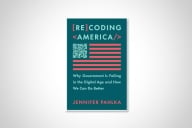You have /5 articles left.
Sign up for a free account or log in.
Quick, who’s likelier to default on a loan: someone with $100,000 of debt, or someone with $2000 of debt?
If you answered $100,000, sorry. The correct answer is $2,000. And the reasons for that shed light on the whole “student loan crisis” debate.
Robert Kelchen had a great piece yesterday pointing out that, among other things, “[s]ixty-three percent of students who started college in 2003-04 and defaulted on their loans by 2009 were college dropouts, while students with a bachelor’s or associate’s degree were only 4% of defaults.” Dropouts often leave with far less debt than graduates, which makes sense; they left sooner. But they left with far less earning power, making their smaller debt loads much harder to pay. What looks like a “high loan balance” issue is, in fact, a “low earning power” issue.
The Boston Globe offered confirmation with more recent data. Yesterday’s story included a handy table listing the default rates for the various colleges throughout Massachusetts. A sample:
Greenfield Community College: 22% default rate
Westfield State University: 4.6% default rate
Williams College: 1.8% default rate
As the cost of the college goes up, the default rate goes down. The relationship isn’t perfect: despite nearly identical costs, Amherst College’s default rate was more than double that of Williams’. But in broad terms, the community college sector -- the most affordable, by far -- had the highest default rates. And that’s in a state in which the community college default rate was lower than the national average.
Though counterintuitive in some ways, these findings actually offer some grounds for optimism. At a really basic level, I don’t think it’s a coincidence that loan default rates spiked during the Great Recession; as the job market recovers -- slowly, but still -- I’d expect to see default rates retreat. And to the extent that colleges do a better job of keeping students on track to graduation, default rates should drop even as average balances increase. That’s because attending long enough to graduate may entail taking out more loans than walking away after a semester or two, but the payoff from the degree is more than worth it.
Are these findings a rebuttal to the “free community college” movement? If less debt is more bad, would no debt be the worst of all?
Um, no. Because the default problem is really a wage problem. For students who drop out anyway, less debt is better than more debt. The real public policy problem is the student who drops out with enough debt to matter, but without a serious income. The “free community college” movement addresses the first directly, by eliminating tuition, and the second indirectly, by making it easier to pay living costs. Students who can cover their living costs are likelier to persist and graduate.
Statistically, too little debt behaves like too much. But that’s a trick of the math. The real crisis isn’t around student loans; it’s around entry-level salaries. Until we figure that out, we’ll keep trying to solve the wrong problems.



